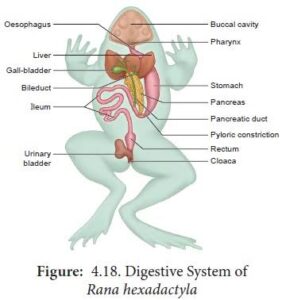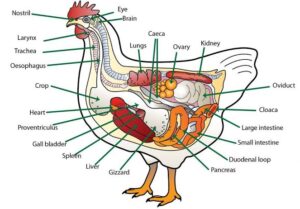Back to: ZOOLOGY 200 Level
WELCOME TO CLASS
Today, we’re going to explore three essential systems that keep animals alive and functioning: the digestive, circulatory, and respiratory systems. These systems are fundamental to maintaining the health and survival of an organism. Let’s break down how each of them works and how they contribute to the overall well-being of animals.
Digestive, Circulatory, Respiratory Systems
The Digestive System: Breaking Down Food for Energy
The digestive system is responsible for taking in food, breaking it down into simpler molecules, and absorbing nutrients. In many animals, the digestive system begins with the mouth, where food is ingested and sometimes broken down mechanically (like chewing). In some animals, such as cows, digestion starts in the stomach, while others, like humans, have both mechanical and chemical digestion taking place in the mouth.

From the stomach, food moves into the intestines, where the bulk of digestion and absorption occurs. The small intestine is where most nutrients are absorbed into the bloodstream, while the large intestine absorbs water and salts, forming solid waste.
In certain animals, like earthworms and insects, digestion is often a bit different. Earthworms have a more complex digestive tract, with a crop for storage and a gizzard for grinding food. In insects, the digestive tract is divided into foregut, midgut, and hindgut, each having a specific role in processing food.
The Circulatory System: Transporting Nutrients and Oxygen
The circulatory system is responsible for transporting nutrients, gases, and waste products throughout the body. It typically consists of the heart, blood vessels, and blood. The heart pumps blood through the blood vessels, delivering oxygen and nutrients to cells while removing waste products.
In closed circulatory systems (like those in humans and most vertebrates), the blood circulates within blood vessels and doesn’t leave them. This allows for more efficient transport, as the blood is kept under pressure and can quickly reach all parts of the body.
In open circulatory systems (found in many arthropods and some mollusks), the blood (or haemolymph) is not contained within blood vessels and instead bathes the organs directly. This system is less efficient than closed systems but works well for smaller animals or those with a less active metabolism.
The Respiratory System: Breathing in Oxygen and Expelling Carbon Dioxide
The respiratory system is responsible for taking in oxygen and expelling carbon dioxide, a waste product of metabolism. In vertebrates like humans, the respiratory system includes the lungs, where gas exchange occurs. Air enters through the nose or mouth, travels down the trachea, and into the lungs, where oxygen is absorbed into the blood and carbon dioxide is expelled.

In invertebrates like insects, the process is different. They use a network of tubes called tracheae that deliver oxygen directly to tissues. The oxygen enters through small openings called spiracles on the body’s surface. This system is highly efficient for small animals and allows them to thrive in environments where oxygen might be less abundant.
Some marine animals, like fish, use gills to extract oxygen from water. Water enters the fish’s mouth, flows over the gills, and oxygen is absorbed while carbon dioxide is expelled.
Summary
- The digestive system breaks down food and absorbs nutrients.
- The circulatory system transports oxygen, nutrients, and waste products around the body.
- The respiratory system takes in oxygen and removes carbon dioxide, allowing for cellular respiration.
- Different animals have evolved various methods of digestion, circulation, and respiration, depending on their environment and needs.
Evaluation
- What are the main functions of the digestive system in animals?
- Explain the difference between closed and open circulatory systems.
- How do vertebrates and invertebrates differ in their respiratory systems?
- Why is the circulatory system important for maintaining an animal’s health?
You’ve made great strides in understanding the essential systems that support life. With this knowledge, you’ll appreciate the complexity of animals even more. Keep up the excellent work, and get ready for the next lesson! Stay curious, and let’s continue learning together!
